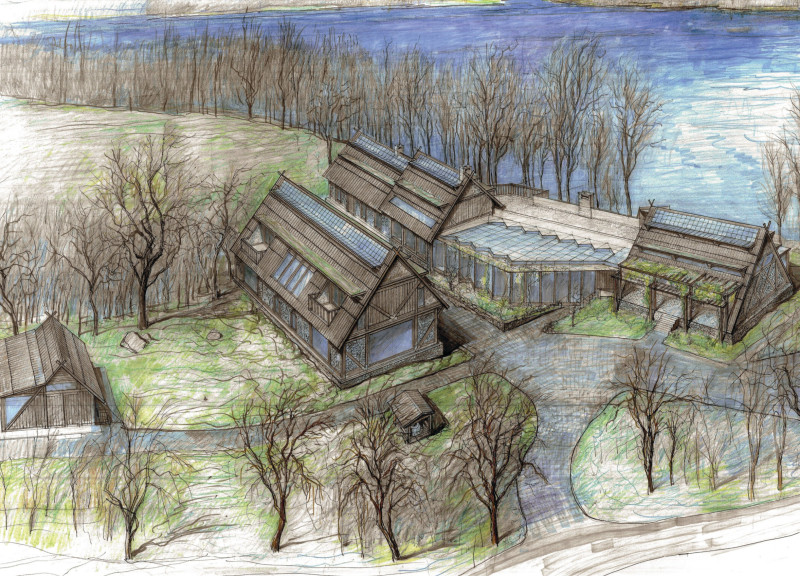5 key facts about this project
The Painters’ Lake House, located in Latvia, is designed to create an inspiring space for artists. Set against the tranquility of a lakeside backdrop, the residence combines workspaces and living areas. This integration allows for personal artistic exploration as well as opportunities for social engagement. The design emphasizes a connection with nature, enhancing the overall experience for its inhabitants.
Architectural Concept
The layout consists of key areas including an artist studio, a living room, a gallery, parking, residential units, and a storage/carpentry workshop. By carefully planning these spaces, the design enhances movement and promotes views of the lake, establishing a strong relationship with the surrounding landscape. The structure balances areas for focused work and relaxation, reflecting the diverse needs of artists.
Materials and Structure
Influenced by traditional Latvian architecture, the design features a prominent triangular roof shape. This detail respects local cultural context while creating a visual connection with nature. The roof incorporates wooden tiles, which not only add texture but also consider the practical aspects of durability and maintenance in Latvia’s climate. At its core, the building uses steel beams and columns that are enclosed in wood, yielding a sturdy structure. This approach allows flexibility in the interior spaces, accommodating various artistic practices.
Interior Spaces
The artist studio serves as a dedicated workspace, designed to foster concentration and creativity. Next to it is a living area intended for hosting visitors. This space takes advantage of wide views of the lake, enhancing its appeal. An indoor garden is part of the living space, acting as both a visual element and a greenhouse during winter. This connection to nature enriches the environment and supports the residents’ well-being.
Environmental Considerations
Extended roof elements are a unique feature, providing resting spots for bats and showcasing a commitment to ecological sustainability. This consideration highlights the project’s goal to blend construction with the local ecosystem. The result is a careful balance that respects the relationship between built and natural environments.
The Painters’ Lake House serves as a thoughtful example of how architecture can support artistic life while remaining attentive to its surroundings. It invites creativity and fosters inspiration with each carefully designed detail.






















































